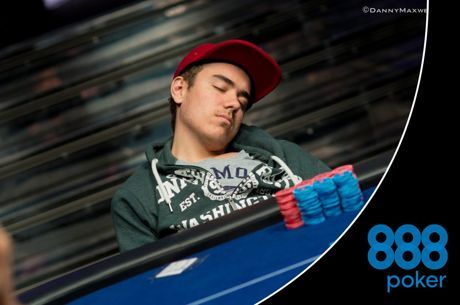H.O.R.S.E. Poker Strategy: In the Mix -- The Future of Mixed Games?

There were several new events added to the 2008 World Series of Poker. Some of them, like Event #4 "Mixed Hold'em", don't really qualify as mixed games in my book. While it's true that two different variations of poker are being played, it feels a bit gimmicky to me, since the two variations are the same game with different betting styles – fixed-limit and no-limit. However there was one new event this year which was a bona fide mixed game. It was Event #8, which was billed by Harrah's as "World Championship Mixed Event". In other circles it was called "Super Mix" and "Eight-Game Mix" because it comprised eight different games: 2-7 triple draw, limit hold'em, limit omaha hi/lo, razz, seven-card stud, seven-card stud hi/lo, no-limit hold'em, and pot-limit omaha.
With mixed games having taken higher visibility in recent years after the creation of the $50,000 H.O.R.S.E. championship in 2006, it's encouraging to see tournament organizers attempting innovation in the mixed-game area. Unfortunately, despite what the number of entrants in the Main Event in recent years might suggest, the $10,000 buy-in is a bit beyond the bankroll of most people, including me.
That's not to say I haven't ever played eight-game mix. PokerStars has rolled it out in both a cash game format and a tournament format. As part of the recent WBCOOP freerolls, I sat down for an eight-game mix tournament. Each game was rotated in order after six minutes; betting limits increased every other game, essentially making the levels twelve minutes long. This differed slightly from the WSOP format, where betting limits were increased after every third game. The WSOP, however, grouped the games in the same format: 2-7 triple draw, limit hold'em and limit Omaha hi/lo (the fixed-limit draw and flop games); razz, seven-card stud, and seven-card stud hi/lo (the stud games); and no-limit hold'em and pot-limit Omaha (the big-bet games).
One of the biggest obstacles to playing eight-game mix should be readily apparent: if you're not a well-rounded player or incredibly lucky, you are at the mercy of the rest of the field. Each game accounts for only 12% of the total hands played; your edge in razz may come in handy when the game is razz, but that's six out of every 48 minutes. And really, how many hands are played in six minutes? Even online, not that many.
Eight-game mix requires a well-roundedness beyond even that of H.O.R.S.E. by minimizing the impact the stud games have on the rotation as a whole. In H.O.R.S.E., the razz, stud and stud hi/lo games are at least somewhat similar to each other. Concepts that apply in one game can easily be transplanted to another, so a player who has a solid grounding in one of those games can adequately play 60% of the games in the rotation. In eight-game mix, however, even the stud games account for fewer than half of the games played.
On PokerStars, eight-game mix is played six-handed. This is a big difference from the typical H.O.R.S.E. tournament, which is played eight-handed. The result should be obvious; opening requirements for all of the games are lighter than they would be in H.O.R.S.E. That also means that the variance is going to be higher, since you will have to press thin edges further than you would at a full eight-handed table.
Another adjustment to be made is accounting for the "big bet" games. Variance in the limit games is quite high (for a skilled player, certainly higher than in the big bet games). The two rounds of big bet poker, no-limit hold'em and pot-limit omaha, are the chance to really punish players who are weaker than you, so that you can accumulate enough chips to survive some downward variance in the limit rounds.
For example, playing pot-limit Omaha, I was in the big blind with 10♣4♦K♠4♠ and took a free three-handed flop of 4♥6♣8♦. I had made bottom set on a dangerous board. When the action checked to me, I fired a pot-sized bet of 450, leaving myself 2,790 behind. The player to my left, who had limped in, called my bet. On this type of board, he was probably drawing. Thus I opted to check the 5♦ that hit the turn. He made it 750 to go, into a pot of 1,350. That bet gave me just less than three-to-one to call with a ten-card draw to what I felt would be the winner. If I missed, I'd be in tough shape with 2,000 chips, but all hope wouldn't be lost. Thus, I called.
The river 6♥ paired the board. The size of the pot allowed me to move my remaining 2,040 into the middle. My opponent dipped into his time bank before calling with 7♣7♠8♠J♣. He had made his straight on the turn and couldn't get away from it. That double-up gave me the cushion I needed later on.
That's not to say I played flawless poker. My bust-out hand came in 2-7 triple draw and was probably a misplay on my part. The hand is a classic demonstration of the importance of position in draw games; look for a discussion of it next week.
With its emphasis on developing skill in eight different variants of poker and balancing the competing aspects of fixed-limit poker and big-bet poker against each other, eight-game mix may represent the future of mixed games. Now that players have had some time to become familiar with it, I expect to see a big increase in 2009 over the 192 players that entered the eight-game mix WSOP event in 2008. Who knows? Maybe online poker sites like PokerStars will run satellites to the event just like they did for the $10,000 no-limit hold'em main event.








